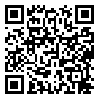Volume 12, Issue 5 (8-2012)
Iranian Journal of Medical Education 2012, 12(5): 317-330 |
Back to browse issues page
Download citation:
BibTeX | RIS | EndNote | Medlars | ProCite | Reference Manager | RefWorks
Send citation to:



BibTeX | RIS | EndNote | Medlars | ProCite | Reference Manager | RefWorks
Send citation to:
Heshmati Nabavi F, Vanaki Z, Mohammadi E. A Critical Review on Communication Paradigms Beteween Academic and Clinical Service Institutions in Nursing. Iranian Journal of Medical Education 2012; 12 (5) :317-330
URL: http://ijme.mui.ac.ir/article-1-1670-en.html
URL: http://ijme.mui.ac.ir/article-1-1670-en.html
, . heshmatinf@mums.ac.ir
Abstract: (12409 Views)
Introduction: Clinical education is the duty of academic and clinical organizations and its effectiveness is influenced by the interaction of both organizations. Since the commencement of nursing profession, this interaction has experienced different paradigms. This paper is an endeavor for identification and critical analysis of these paradigms as well as the current trends of the interactions between educational and clinical institutions. Exploration of these patterns and their advantages and disadvantages could help the administrators of educational and clinical institutions in designation and choice of appropriate relationship paradigms.
Methods: For this narrative review, an electronic search within three phases was performed in January 2008 to retrieve studies published from 1990 to 2008 through these databases: ISI Web of Science, Medline, CINAHL, ERIC, and BNI. The key terms were clinical education, clinical practice models, clinical education model, models of shared learning in clinical practice, and partnership between university and clinical institutions. These articles were studied several times to identify and derive the type of communicational paradigm, significant characteristics, manners of communication, advantages, and disadvantages.
Results: Four paradigms of communication between educational and clinical institutions in nursing profession were identified. These included service-orientation, organizational independence, shared models of clinical education, and intra-organizational partnership paradigm.
Conclusion: A developing trend can be identified which is influenced by factors such as professional progress in nursing and changes in community expectations. The need for professionalism and expanding the body of knowledge in nursing makes it necessary to maintain nursing schools. The trend of communication paradigms is toward the establishment of partnership between these two independent organizations.
Keywords: Clinical education, clinical education pattern, nursing instructors, partnership, educational organization, clinical organization.
Type of Study: Review article |
Subject:
Educational Management
Received: 2011/06/5 | Accepted: 2012/05/11 | Published: 2012/08/15 | ePublished: 2012/08/15
Received: 2011/06/5 | Accepted: 2012/05/11 | Published: 2012/08/15 | ePublished: 2012/08/15
Send email to the article author
| Rights and permissions | |
 |
This work is licensed under a Creative Commons Attribution-NonCommercial 4.0 International License. |




